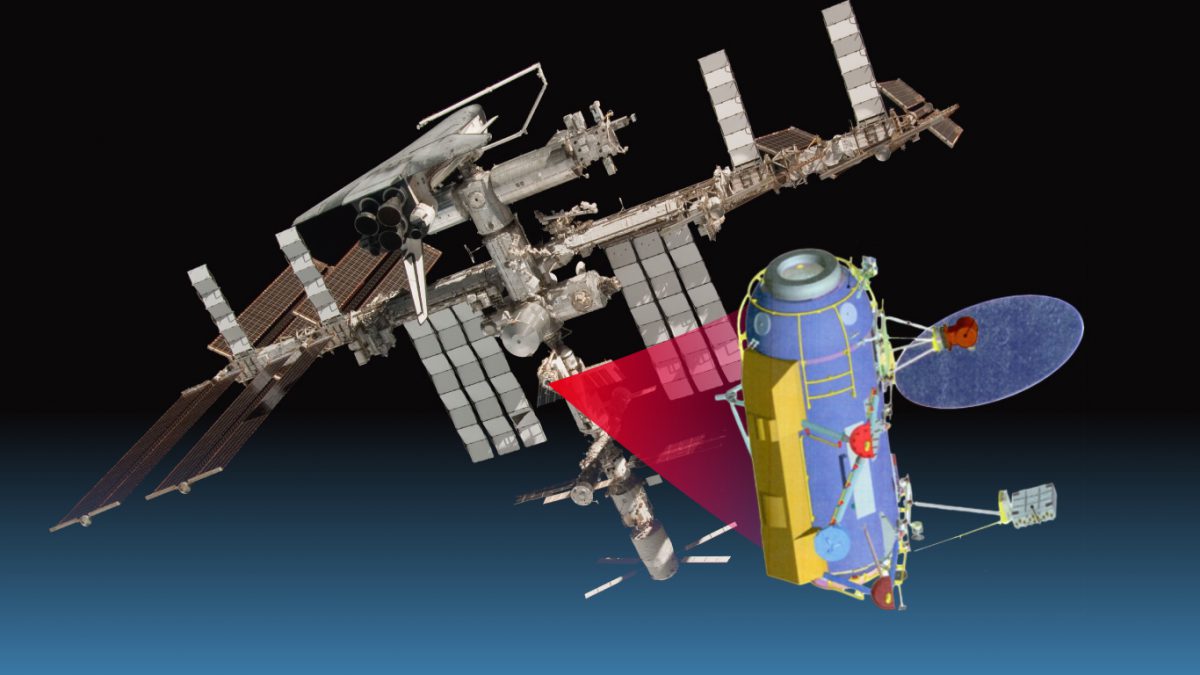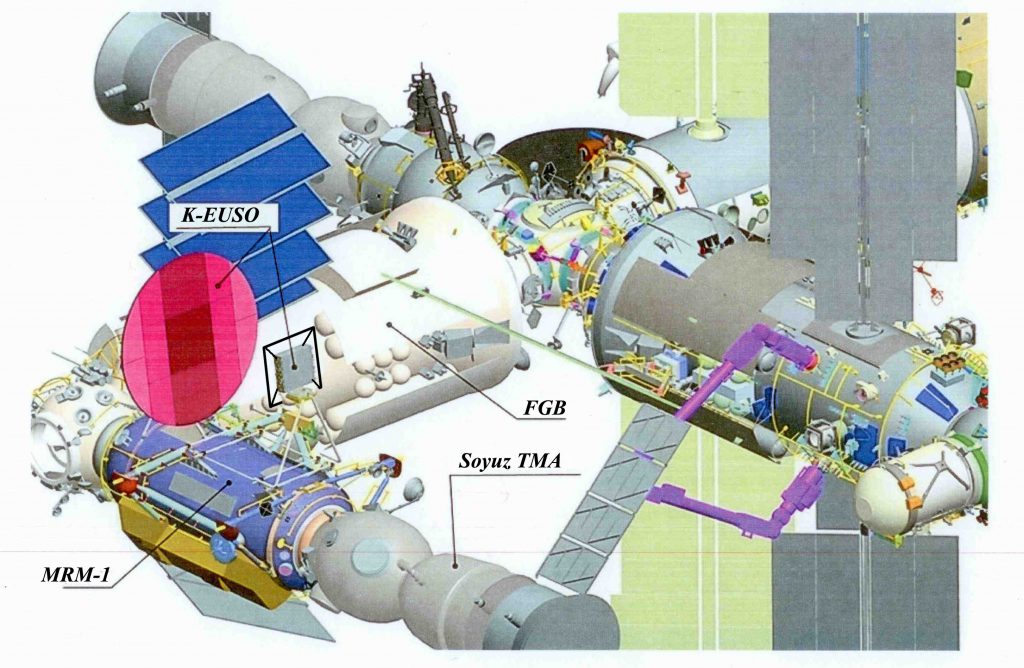

K-EUSO will be the first detector to measure UHECR from space, allowing a measurment of the UHECR spectrum and anisotropy over the full celestial sphere. Since its first conception as KLYPVE, the project has evolved into K-EUSO, and the use of Riken’s optics has allowed an increase of the field of view and consequently of the UHECR statistics.
The temporal and spatial evolution of UV light recorded by K-EUSO will allow the reconstruction of the EAS, and thus the measurement of the energy and arrival direction of the UHECR. Attached to the Russian MRM-1 module on-board ISS, it will detect UHECRs above 2 × 1019 eV with a yearly exposure of about 4 times that of the Auger observatory. K-EUSO is planned to operate for a minimum of 3 years with the possibility to function for more if the lifetime of the ISS is extended to 2028.
The main goals of K-EUSO – and not achievable by ground based observatories independently of their size are:
- To perform the first all-sky observation of UHECR, in order to establish whether – and from what energy – the particle fluxes of the two hemispheres are different.
Data of Telescope Array and Auger show that the UHECR extragalactic sky appears to be very asymmetric at the highest energy region, with a factor of 6 difference between the fluxes in the North and in the South. Whether the differences are due to the intrinsic physics or measurement systematics is one of very important questions that the present ground experiments are facing. Data from K-EUSO will give a definite answer to this question after only first six months of operation. - To analyze UHECR clustering in order to independently confirm (or rule out) the presence of the TA hotspot. After one year of observation the TA hotspot would be confirmed at the 3σ level along with an independent measurement of the energy spectrum. Also, the Auger “warm spot” would be independently detected – if present – by K-EUSO.
- To study UHECR anisotropies over various angular scales, including possible correlation to nearby large-scale extragalactic structures (≈40 degrees), Milky-Way related features, and dipole-type anisotropy.
Previous Legacy: We have experience in construction and operation of more than10 detectors, from large satellite borne instruments such as PAMELA [ref.1, ref.2, ref.3, ref.4, ref.5] and NINA to those on board space stations: from Russian Mir (’90s, Sileye-1, -2) to the ISS (Sileye-3, Altea, Lazio).

References
- Bogomolov, E. A., et al. Spectra of solar neutrons with energies of 10 – 1000 MeV in the PAMELA experiment in the are events of 2006 – 2015. Bulletin of the Russian Academy of Sciences, Physics, 81:132-135, February 2017. doi: 10.3103/S1062873817020113.
- Koldobskiy, S. A., et al. Solar modulation of cosmic deuteron uxes in the PAMELA experiment. Bulletin of the Russian Academy of Sciences, Physics, 81:151-153, February 2017. doi: 10.3103/S106287381702023X.
- Adams, J. H., et al. Space experiment TUS on board the Lomonosov satellite as pathnder of JEM-EUSO. Experimental Astronomy, 40:315-326, November 2015. doi: 10.1007/s10686-015-9465-y.
- Mori, N., et al. Pamela measurements of the boron and carbon spectra. Journal of Physics: Conference Series, 632(1), 2015. doi: 10.1088/1742-6596/632/1/012017.
- Prieto-Alfonso, H., et al. Radiation hardness assurance for the jem-euso space mission. Reliability Engineering and System Safety, 133(0):137-145, 2015. ISSN 0951-8320. doi: 10.1016/j.ress.2014.08.014.